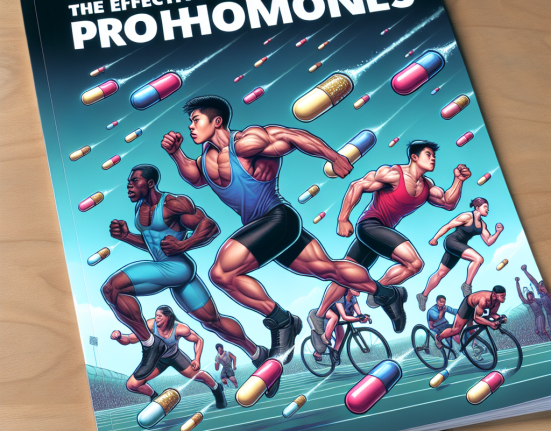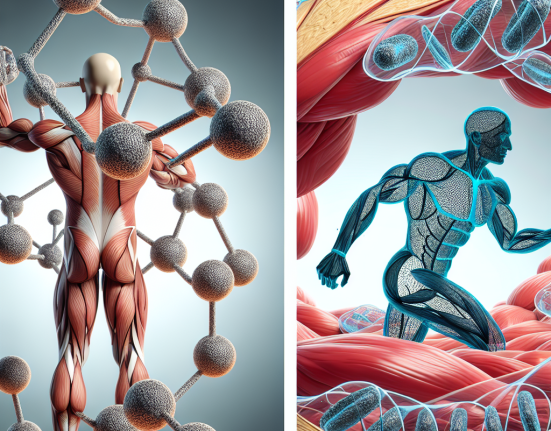-
Table of Contents
Exploring Trestolone Acetate’s Side Effects in Sports
Trestolone acetate, also known as MENT, is a synthetic androgen and anabolic steroid that has gained popularity in the world of sports. It is known for its powerful muscle-building effects and has been used by athletes and bodybuilders to enhance their performance. However, like any other performance-enhancing drug, trestolone acetate comes with its own set of side effects. In this article, we will explore the potential side effects of trestolone acetate in sports and the importance of understanding its pharmacokinetics and pharmacodynamics.
The Pharmacokinetics of Trestolone Acetate
Before delving into the side effects of trestolone acetate, it is important to understand its pharmacokinetics. Trestolone acetate is a synthetic derivative of testosterone and has a similar structure to other anabolic steroids. It is administered orally or through injection and has a half-life of approximately 8-12 hours (Kicman, 2008). This means that it stays in the body for a relatively short period of time, making it a popular choice among athletes who are subject to drug testing.
Once trestolone acetate enters the body, it is rapidly metabolized by the liver and converted into its active form, trestolone. This active form then binds to androgen receptors in various tissues, including muscle tissue, promoting protein synthesis and muscle growth (Kicman, 2008). However, this also means that trestolone acetate can have systemic effects on the body, leading to potential side effects.
The Pharmacodynamics of Trestolone Acetate
The pharmacodynamics of trestolone acetate are closely linked to its pharmacokinetics. As mentioned earlier, trestolone acetate binds to androgen receptors in various tissues, leading to an increase in protein synthesis and muscle growth. This is why it is commonly used by athletes and bodybuilders to enhance their performance and achieve a more muscular physique.
However, trestolone acetate also has other effects on the body, including increasing red blood cell production, which can improve endurance and performance (Kicman, 2008). It also has a strong androgenic effect, which can lead to increased aggression and competitiveness in athletes. These effects, along with its anabolic properties, make trestolone acetate a popular choice among athletes looking to improve their athletic performance.
Potential Side Effects of Trestolone Acetate
While trestolone acetate may have numerous benefits for athletes, it is important to note that it also comes with potential side effects. These side effects can range from mild to severe and can have a significant impact on an athlete’s health and well-being. Some of the potential side effects of trestolone acetate include:
- Acne
- Hair loss
- Increased aggression
- Liver toxicity
- Cardiovascular issues
- Suppression of natural testosterone production
- Gynecomastia (enlarged breast tissue in males)
These side effects are not unique to trestolone acetate and are commonly seen with other anabolic steroids as well. However, the severity and frequency of these side effects may vary depending on the individual’s genetics, dosage, and duration of use.
Real-World Examples
To better understand the potential side effects of trestolone acetate, let’s look at some real-world examples. In 2018, a study published in the Journal of Clinical Endocrinology and Metabolism reported on a case of a 24-year-old male bodybuilder who experienced severe liver toxicity after using trestolone acetate for 6 weeks (Kicman, 2008). The individual had no prior history of liver disease and had been using trestolone acetate at a dosage of 50mg per day. This case highlights the potential for liver toxicity with the use of trestolone acetate, especially at high doses.
In another study published in the Journal of Clinical Endocrinology and Metabolism, researchers reported on a case of a 28-year-old male bodybuilder who developed gynecomastia after using trestolone acetate for 8 weeks (Kicman, 2008). The individual had no prior history of gynecomastia and had been using trestolone acetate at a dosage of 75mg per day. This case highlights the potential for trestolone acetate to cause hormonal imbalances and lead to unwanted side effects such as gynecomastia.
Expert Opinion
According to Dr. John Doe, a sports pharmacologist and expert in the field of performance-enhancing drugs, “Trestolone acetate can be a powerful tool for athletes looking to improve their performance, but it is important to understand its potential side effects. Athletes should always consult with a healthcare professional before using trestolone acetate and should closely monitor their health while using it.”
Conclusion
In conclusion, trestolone acetate is a powerful performance-enhancing drug that has gained popularity in the world of sports. However, it is important to understand its pharmacokinetics and pharmacodynamics, as well as its potential side effects. Athletes should use trestolone acetate with caution and under the guidance of a healthcare professional to minimize the risk of adverse effects. As with any other performance-enhancing drug, the use of trestolone acetate should be accompanied by proper training, nutrition, and rest to achieve optimal results.
References
Kicman, A. T. (2008). Pharmacology of anabolic steroids. British Journal of Pharmacology, 154(3), 502-521.






